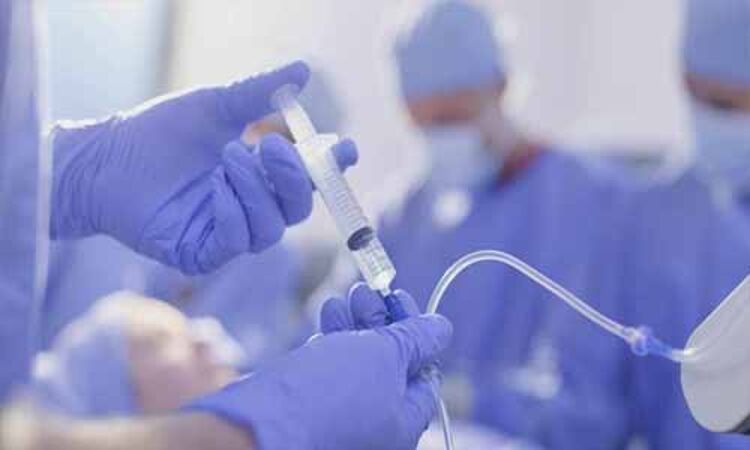- Home
- Medical news & Guidelines
- Anesthesiology
- Cardiology and CTVS
- Critical Care
- Dentistry
- Dermatology
- Diabetes and Endocrinology
- ENT
- Gastroenterology
- Medicine
- Nephrology
- Neurology
- Obstretics-Gynaecology
- Oncology
- Ophthalmology
- Orthopaedics
- Pediatrics-Neonatology
- Psychiatry
- Pulmonology
- Radiology
- Surgery
- Urology
- Laboratory Medicine
- Diet
- Nursing
- Paramedical
- Physiotherapy
- Health news
- Fact Check
- Bone Health Fact Check
- Brain Health Fact Check
- Cancer Related Fact Check
- Child Care Fact Check
- Dental and oral health fact check
- Diabetes and metabolic health fact check
- Diet and Nutrition Fact Check
- Eye and ENT Care Fact Check
- Fitness fact check
- Gut health fact check
- Heart health fact check
- Kidney health fact check
- Medical education fact check
- Men's health fact check
- Respiratory fact check
- Skin and hair care fact check
- Vaccine and Immunization fact check
- Women's health fact check
- AYUSH
- State News
- Andaman and Nicobar Islands
- Andhra Pradesh
- Arunachal Pradesh
- Assam
- Bihar
- Chandigarh
- Chattisgarh
- Dadra and Nagar Haveli
- Daman and Diu
- Delhi
- Goa
- Gujarat
- Haryana
- Himachal Pradesh
- Jammu & Kashmir
- Jharkhand
- Karnataka
- Kerala
- Ladakh
- Lakshadweep
- Madhya Pradesh
- Maharashtra
- Manipur
- Meghalaya
- Mizoram
- Nagaland
- Odisha
- Puducherry
- Punjab
- Rajasthan
- Sikkim
- Tamil Nadu
- Telangana
- Tripura
- Uttar Pradesh
- Uttrakhand
- West Bengal
- Medical Education
- Industry
Switching from general to regional anaesthesia may help reduce global warming

Researchers have found in a new study that switching from general to regional anaesthesia may cut greenhouse gas emissions. It is a real-life example of hip/knee replacements at 1 hospital over a year that has illustrated potential of the switch over.
Switching from general to regional anaesthesia may help cut greenhouse emissions and ultimately help reduce global warming, indicates a real life example at one US hospital over the course of a year, and reported in the journal Regional Anesthesia & Pain Medicine.
The evidence suggests that regional anaesthesia provides more effective pain relief, has fewer unpleasant side effects than general anaesthesia, shortens hospital stay, and may be preferred by patients, say the authors.
But it may also have an important environmental role that is "truly global in nature," they add.
Unlike general anaesthesia, it doesn't use volatile halogenated agents, such as desflurane, or nitrous oxide. These greenhouse gases, which can be retained in the atmosphere for up to 114 years, damage the earth's ozone layer, increasing the risk of global warming and climate change.
Regional anaesthesia, instead, uses a local nerve block along with intravenous sedatives.
In 2009, in the USA alone, more than a million hip and knee replacement procedures were carried out, lasting an average of 2 hours.
If all of these were done under general anaesthetic, that would be the equivalent of 112,000 kg of desflurane and 9000 kg of nitrous oxide released into the atmosphere, calculate the authors.
That's equivalent to the greenhouse emissions generated by 3,260,000 lbs of coal burned, or 333,000 gallons of petrol used, or 7,350,000 car miles, or 378,000,000 smartphones charged.
In 2019, the Hospital for Special Surgery in New York opted to carry out as many hip and knee replacements as possible, using regional anaesthesia. Out of the 10,485 procedures carried out that year, just 4% (419)were done under general anaesthetic.
The authors calculated that this substitution 'saved' the equivalent of nearly 27,000 lbs of coal burned, 2750 gallons of petrol, 60,500 car miles, or 3,110,000 smartphones charged.
"This certainly is not a complete analysis as we have not calculated how the manufacture of regional anesthetic agents or the impact of the plastics involved in regional anesthetic kits might affect the earth compared with volatile anesthetics," they acknowledge.
And not all surgical procedures can easily be switched to regional anaesthesia, they concede.
But they point out: "Although no definitive data can provide us with the specific contribution of anesthetic gases to the worldwide greenhouse gases, studies estimate that healthcare systems generally are responsible for 5-10% of the national pollutant emissions and the anesthetic gases in the USA contribute to approximately 50-60% of an operating theater's carbon footprint."
They conclude: "Thus, increasing the use of regional anesthesia is potentially good for the climate, improves the quality of care (at least for hip and knee replacements), and may allow individual practitioners to take personal responsibility in the fight against global warming."
For further reference log on to:
Dr Kamal Kant Kohli-MBBS, DTCD- a chest specialist with more than 30 years of practice and a flair for writing clinical articles, Dr Kamal Kant Kohli joined Medical Dialogues as a Chief Editor of Medical News. Besides writing articles, as an editor, he proofreads and verifies all the medical content published on Medical Dialogues including those coming from journals, studies,medical conferences,guidelines etc. Email: drkohli@medicaldialogues.in. Contact no. 011-43720751


